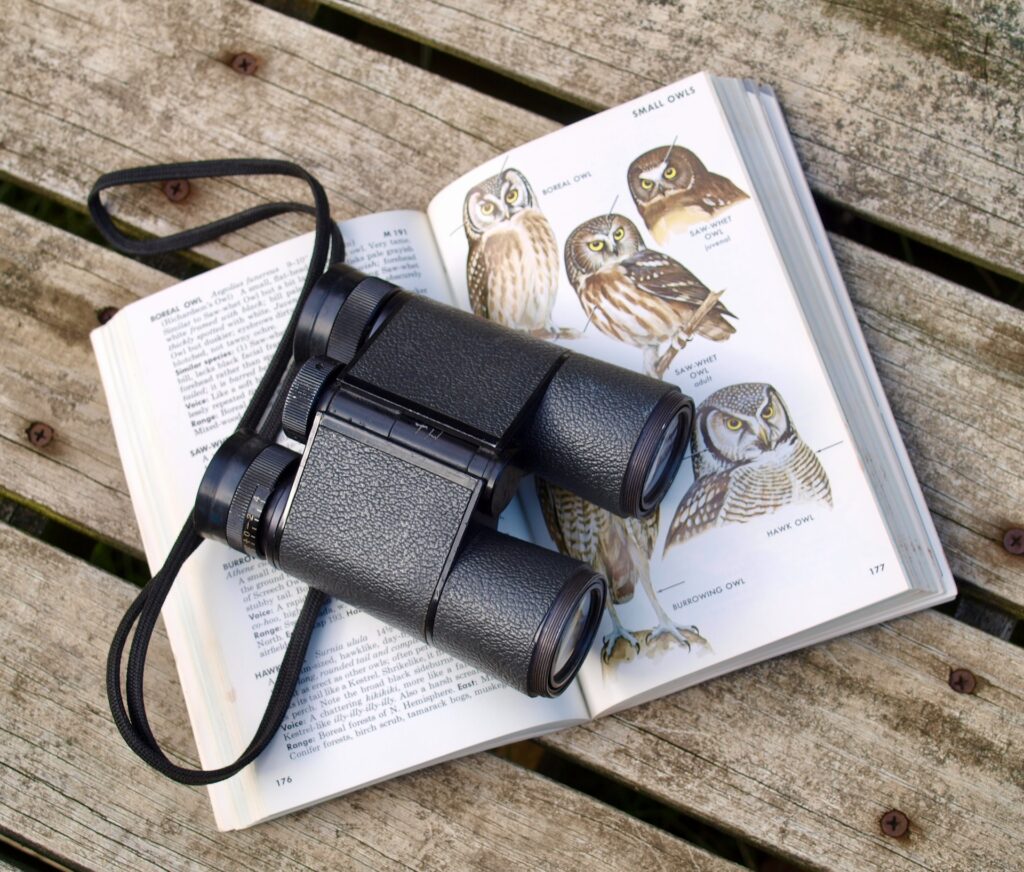
Bird watching, or birding, is a pastime cherished by nature enthusiasts worldwide. It’s an activity that combines the joy of observing feathered wonders with the thrill of discovery. Whether you’re a seasoned birder or a beginner looking to start this delightful hobby, this comprehensive guide to bird watching will provide you with valuable tips, techniques, and insights to enhance your avian adventures.
1. Essential Bird Watching Equipment
Before setting out on your bird watching journey, it’s important to have the right equipment. Here are the essentials:
Binoculars: Invest in a good pair of binoculars with a comfortable grip and a wide field of view. Opt for ones with quality optics and adjustable focus to help you spot and observe birds at a distance.
Field Guide: A field guidebook or a bird identification app is indispensable for identifying species. Look for guides specific to your region to make identification easier.
Notebook and Pen: Keep a birding journal to record your observations, including the date, location, and details about the birds you encounter. This helps in tracking your progress and creating a personal birding history.
Spotting Scope (Optional): For long-distance observation, especially in open areas, a spotting scope can be beneficial. However, it’s not necessary for beginners.
Camera (Optional): Photography can enhance your birding experience. If you’re interested in capturing bird images, consider a camera with a telephoto lens.
2. Choose the Right Location
Selecting the right location is crucial for successful bird watching. Research birding hotspots in your area or places known for attracting specific species. Popular locations include parks, nature reserves, wetlands, and even your own backyard.
3. Learn Bird Calls and Songs
Birds communicate through calls and songs, which can help you identify them even before you spot them. Learning these sounds enhances your birding experience. You can use apps, websites, or field guides that include audio clips to familiarize yourself with bird vocalizations.
4. Be Patient and Still
Birds are naturally cautious, and sudden movements or loud noises can scare them away. To observe them closely, find a quiet spot, stay still, and be patient. It may take some time for birds to become accustomed to your presence.
5. Use Fieldcraft Techniques
Fieldcraft techniques are essential for getting closer to birds without disturbing them. These include:
- Camouflage: Wear clothing that blends with your surroundings to avoid standing out.
- Silhouette: Position yourself so that your silhouette is minimized. Birds are less likely to notice you.
- Slow Movements: Move slowly and deliberately to avoid startling birds.
- Observe from a Distance: Use binoculars or a spotting scope to observe birds from a distance, especially if you don’t want to disturb nesting areas.
6. Identify Birds
The key to bird watching is identifying the species you encounter. Here’s a step-by-step approach:
- Size and Shape: Note the bird’s size and overall shape. Is it small or large? Does it have a distinctive shape, such as long legs or a prominent beak?
- Color: Pay attention to the bird’s coloration, including its plumage, markings, and any distinctive features like crests or eye rings.
- Behavior: Observe the bird’s behavior, such as its feeding habits, flight patterns, and interactions with other birds.
- Habitat: Consider the bird’s habitat. Different species are often associated with specific types of environments.
- Field Marks: Look for distinctive field marks, such as wing bars, tail shapes, and facial patterns.
- Compare with Field Guide: Use your field guide or bird identification app to compare your observations with images and descriptions to identify the species.
7. Record Your Observations
As mentioned earlier, keeping a birding journal is a great way to record your observations. Include details like the date, time, location, weather conditions, and any unique behaviors or interactions you witness.
8. Join Bird Watching Groups
Bird watching can be a social activity. Joining local bird watching groups or online communities allows you to share experiences, exchange tips, and learn from experienced birders. These communities often organize group outings, which can be a great way to learn and make new friends who share your passion.
9. Conservation and Ethics
Bird watching goes hand-in-hand with bird conservation. Follow these ethical guidelines:
- Respect Bird Habitats: Stay on designated trails and paths to avoid disturbing nests and habitats. Keep a safe distance from nesting sites.
- Leave No Trace: Take your trash with you and leave nature as you found it.
- Keep a Safe Distance: Avoid approaching birds too closely. Use binoculars and spotting scopes for close observations.
- Do Not Disturb Wildlife: Refrain from playing bird calls loudly to attract birds or disturbing them for a better view.
- Contribute to Conservation: Support organizations that work to protect bird species and their habitats through donations and volunteering.
10. Enjoy the Journey
Finally, remember that bird watching is not just about ticking off a list of species. It’s about connecting with nature, appreciating the beauty of birds, and enjoying the peaceful moments spent outdoors. Take time to savor the experience and the serenity it brings.
In conclusion, bird watching is a captivating hobby that allows you to explore the natural world, learn about diverse bird species, and contribute to conservation efforts. By following these tips and techniques, you can embark on a fulfilling birding journey that enriches your connection with nature and the avian wonders that surround us. Happy bird watching!
